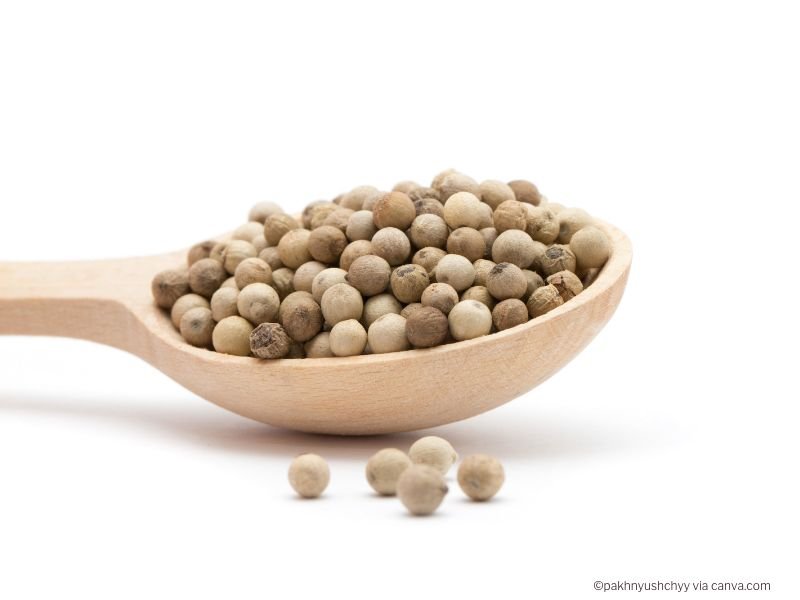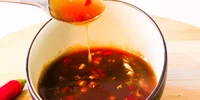
HOW WELL DO YOU KNOW PEPPERCORNS?
If you are like me, you have been using pepper for most of your life but used to know little to nothing about it. The Germans have a saying ‘Geh wohin der Pfeffer wächst’ (= go where pepper grows) that is a polite-ish way of telling you to bugger off. But where does pepper actually grow? To debunk that myth for you here and now: pepper grows in south east Asia, mainly India and Vietnam, as well as in Brazil and parts of Africa.
If you are into cooking or a foodie, you might also ask yourself:
ARE ALL PEPPERCORNS MADE EQUAL? Is there a difference between white, black, red, green and pink pepper?
PEPPERCORNS GROWING ON THE PEPPER TREE

White, black, red and green peppercorns are all the same plant, Piper nigrum, but are harvested and processed differently. Pink peppercorns however are not related to them.
In summary, the main difference between the different types of peppercorns is the level of ripeness at the time of harvest, and the methods of processing which lead to different flavour profile:

WHITE PEPPERCORNS
White peppercorns are usually used in light-coloured sauces, mashed potatoes, soups and other dishes where a black pepper would be visible. Because white pepper lacks essential oils, unlike black pepper, its taste is not as pungent and complex - but all the hotter.
White peppercorns are made from almost fully ripe black peppercorns that have had the dark outer layer removed.
In order to obtain white pepper, the peppercorns are allowed to soak in water for a week to soften the outer layer until the outer black skin is softened and can be rubbed off. Afterwards, the white inner seed of the peppercorn is dried in the sun or by using a dehydrator (this drying process can take from several days to a week).
These recipes go well with white pepper

BLACK PEPPERCORNS
Black pepper is the most commonly used pepper around the world and the true king of spices. Compared to white peppercorns, black peppercorns have a stronger, more pungent flavour and are often used in meat dishes and other savoury preparations.
Black peppercorns are obtained by picking the pepper berries when they are almost ripe and then allowing them to dry in the sun until they wrinkle and turn dark. As they dry, the outer layer of the berry shrinks and wrinkles, turning the peppercorn black. The drying process can take up to several weeks, depending on the weather conditions.
These recipes go well with black pepper

GREEN PEPPERCORNS
Green peppercorns have a fresher, more grassy flavour than black or white peppercorns and are often used in light-coloured sauces, as a garnish, or in the popular pepper sauces. Since they tend to dry out and lose their flavour quickly, they are most often sold and stored as preserve, in a brine of salt water.
In order to obtain green pepper, you need to pick the pepper berries before they are ripe and still green in color. However, unlike the black peppercorns, they are not allowed to dry and ferment, but processed immediately (brined, frozen and sometimes even dried).
The process of brining allows the peppercorns to maintain their green colour, but also gives them a tangy, salty flavour.
These recipes go well with green pepper

RED PEPPERCORNS
Red peppercorns are a rarity and not commonly used - hence the higher price. That’s probably because in order to harvest them, the berries need to be fully ripe, which adds an extra three to four months to their lifecycle. They are then vulnerable to weather conditions, attractive to birds and very fragile so they need to be hand picked.
However, I would say they are worth their money, as they taste sweet and fruity with a mild heat and can give your standard dessert (yes, they are amazing with fruit and sweets!) or fish dishes additional depth of flavour.
These recipes go well with red peppercorns

PINK (not)PEPPERCORNS
Pink peppercorns are not actually peppercorns at all, but are the dried berries of a different plant called Brazilian pepper tree or Peruvian pepper tree (Schinus molle) which is native to South America. They have a mild heat, a slightly sweet, almost fruity flavour, a bright pink colour and are often used as a decorative garnish and as a seasoning in gourmet dishes.
You might hear the taste being described as fragrant, while I personally would call it perfume-y. It can certainly be a bit over powering and you need to be mindful of where and what to pair it with.
A word of caution for people with nut allergy: since pink peppercorns are related to pistachios and cashew nuts, some people might have allergic reactions.
these recipes go well with pink pepper

SICHUAN PEPPER
Sichuan pepper, also known as Szechuan pepper, is a spice that comes from the husks of the berries of a plant called the Sichuan peppercorn, which is native to the Sichuan province of China. It is not a true pepper, but rather a member of the citrus family.
Sichuan pepper has a unique flavor and aroma that is both slightly numbing and slightly citrusy, with a bit of heat that is distinct from chili peppers. It does leave your mouth a bit numb and the sensation of eating Sichuan pepper can be described as ‘electric’. It is commonly used in Chinese cuisine, particularly in Sichuan cuisine, to add a complex and unique flavour to dishes such as spicy stir-fry, soups, noodles and kung pao chicken.
Sichuan pepper can be used whole or ground, and is often combined with other spices such as star anise, cinnamon, and fennel to create a flavourful seasoning blend (e.g. ‘Chinese 5 spice’).
In addition to its culinary uses, Sichuan pepper is sometimes used in traditional Chinese medicine for its supposed digestive and anti-inflammatory properties.
There you have it! Now ‘go to where the pepper grows’ and bring me back a bucket or three, too :)
these recipes go well with sichuan pepper

What pepper do you use most often or like best? Leave me a comment below and share this article with your friends if you found it useful, so I know to keep on writing for you.
xoxo Rena









